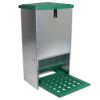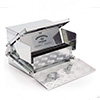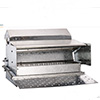Train Your Chickens Use An Automatic Feeder
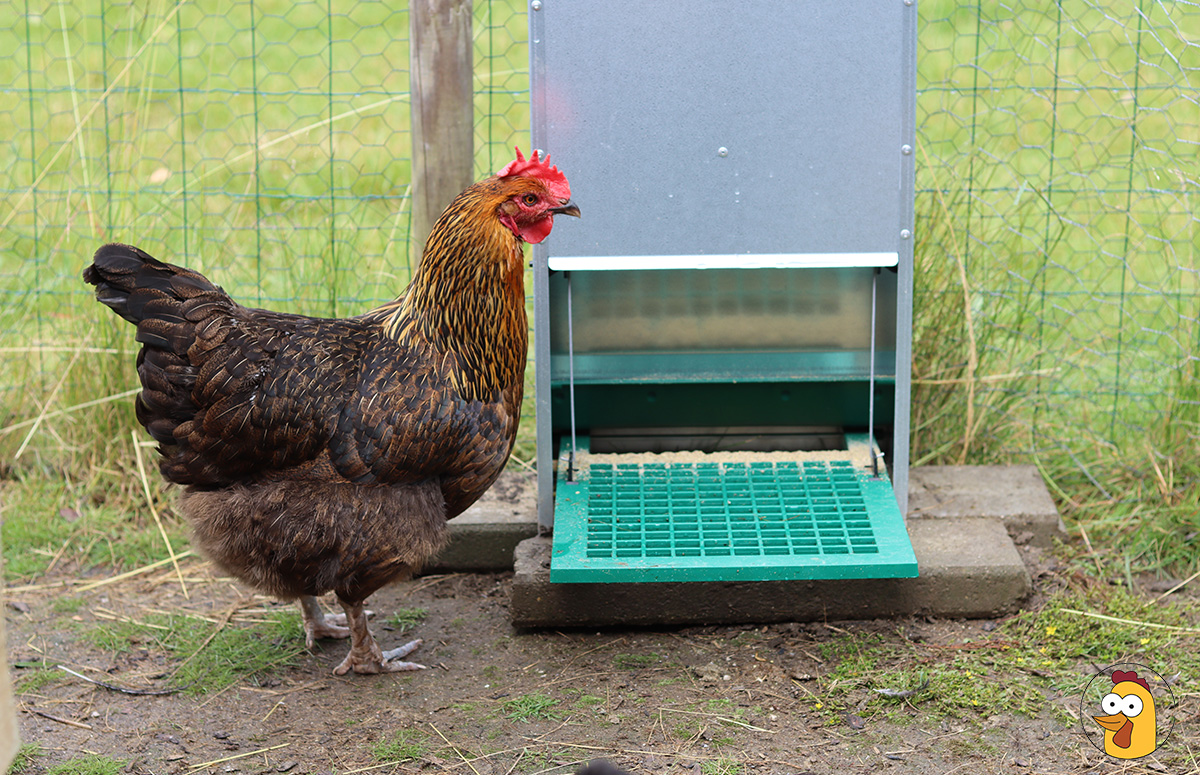
Chicken Fans is reader-supported. When you buy through our links, we may earn a commission. Learn more about our privacy policy and disclaimer.
Are you tired of your chickens not understanding how an automatic feeder works? You’re not alone. Many chicken owners give up because their chickens don’t seem to get the hang of an automatic feeder like the Feed-O-Matic or Grandpa’s Feeder.
We tested one type of automatic feeder with our flock to find out how long it would take them to use it.
First, let’s review some of the most popular models of automatic treadle feeders:
AUTOMATIC TREADLE CHICKEN FEEDERS
Follow this step-by-step guide, and your chickens will quickly learn how to access their food. These are the steps we will discuss:
- Ensure stability
- Keep the feeder open with an object
- Use treats like mealworms
- Remove the object
- Be patient
1. Ensure Stability
We have purchased the Feed-O-Matic treadle feeder, a more budget-friendly automatic feeder option with a large capacity.
Before teaching your chickens to use the automatic feeder, make sure it stands firm and stable.
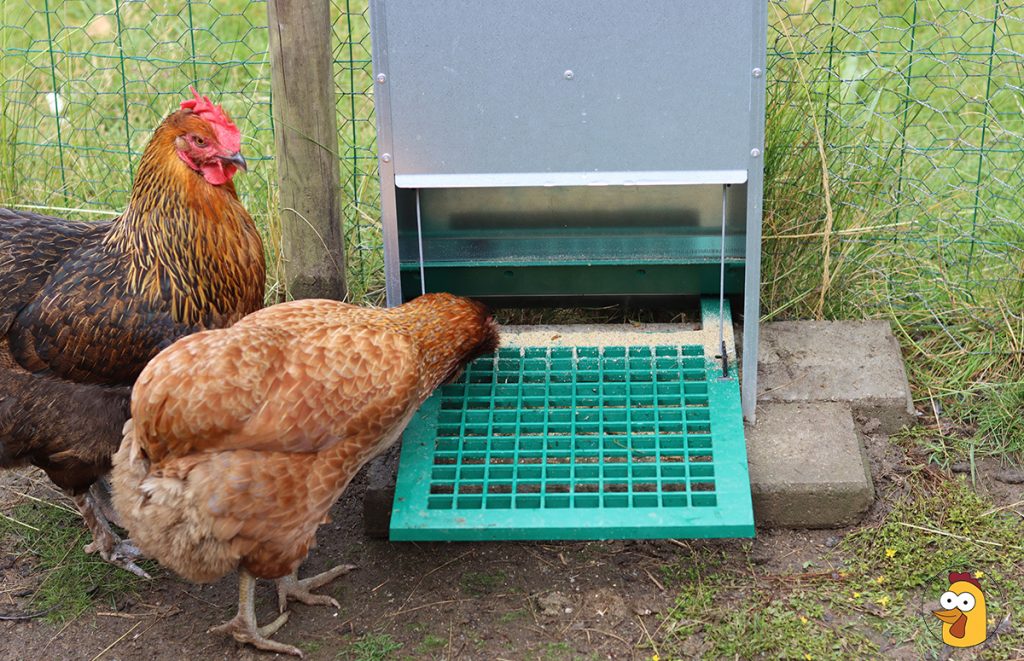
Here are some tips to make this work:
- Stable Placement: Place the feeder on a flat, solid surface. This prevents wobbling when chickens step on the treadle.
- Extra Securing: If possible, secure the feeder to the ground or wall.
- Regular Checks: Regularly check if the feeder is still stable.
We placed the feeder on a few flat stones for stability so the treadle could easily move down when the chickens stepped on it.
2. Keep the Feeder Open With an Object
Initially, keep the feeder open so your chickens can get used to it. This helps them understand that this new thing in the coop is their new feeder.
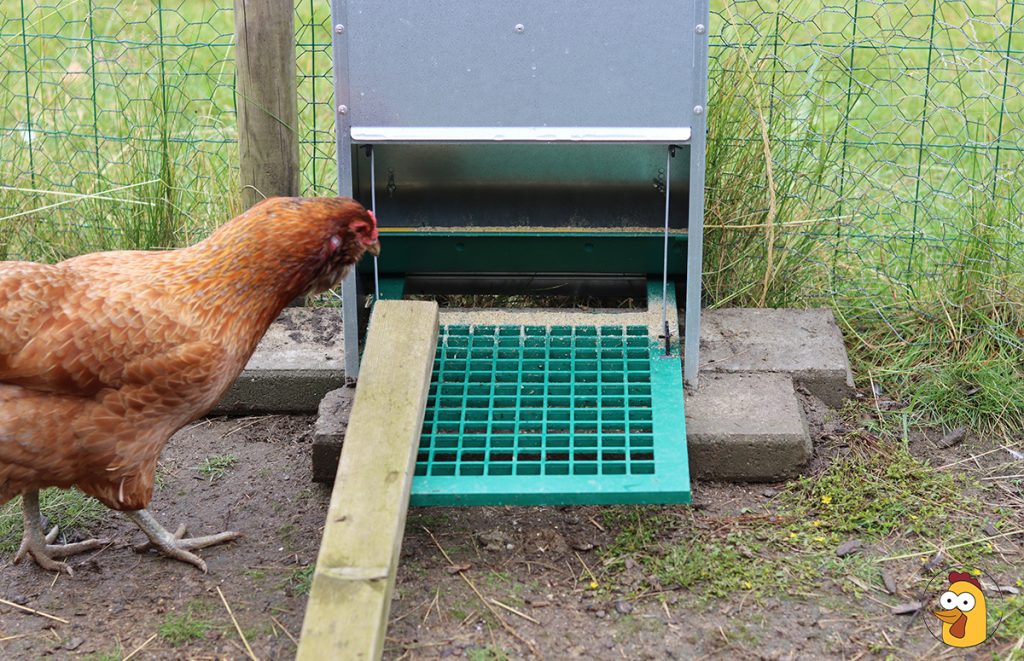
We used a wooden block to keep the feeder open, but any object weighing over 1 pound will work.
Keeping the feeder open is important because it gives your chickens a chance to get used to the new feeder without fear and without it moving.
3. Use Treats Like Mealworms
To help your chickens get used to the automatic feeder faster and easier, you can use treats like mealworms or black soldier fly.
Sprinkle some mealworms in and around the open feeder. Regularly doing this will attract your chickens’ attention and create a positive association with the new feeder.
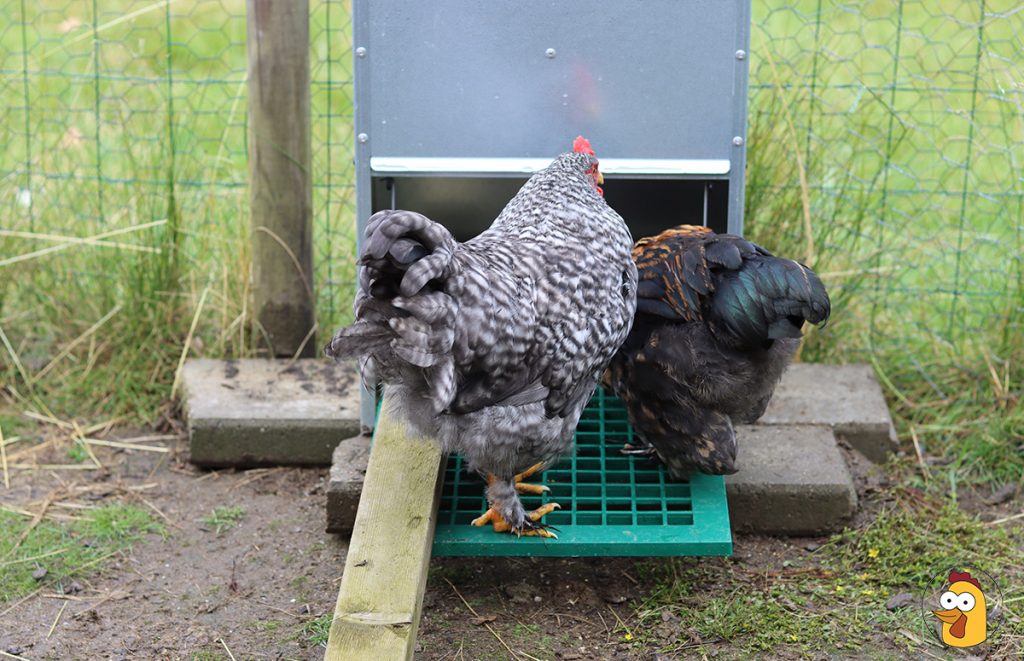
Relying only on regular feed to get your chickens to use the new feeder will make the learning process longer. Chickens are creatures of habit and will hesitate to try new things.
You can do this step and the previous one as long as necessary.
Only move to the next step when you notice they are comfortable eating from the automatic feeder.
4. Remove the Object
Once your chickens are used to the new feeder, it’s time to take the next step and teach them how to open it.
This is the most crucial step in the learning process.
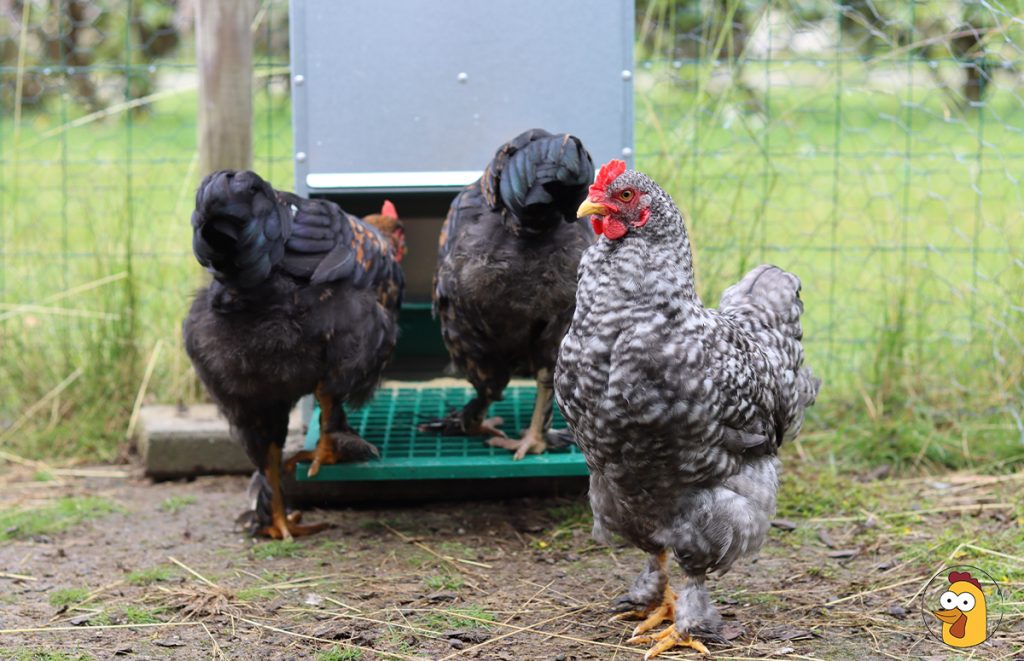
Remove the block, brick, or whatever object you used to keep the feeder open. Now, the feeder should stay closed unless a chicken steps on the treadle.
Use treats like mealworms again. Sprinkle them generously with the regular feed and watch how they use the new feeder.
Many chicken owners struggle with their chickens’ ability to learn this, but it depends on the chicken. Once one learns, the others will quickly follow.
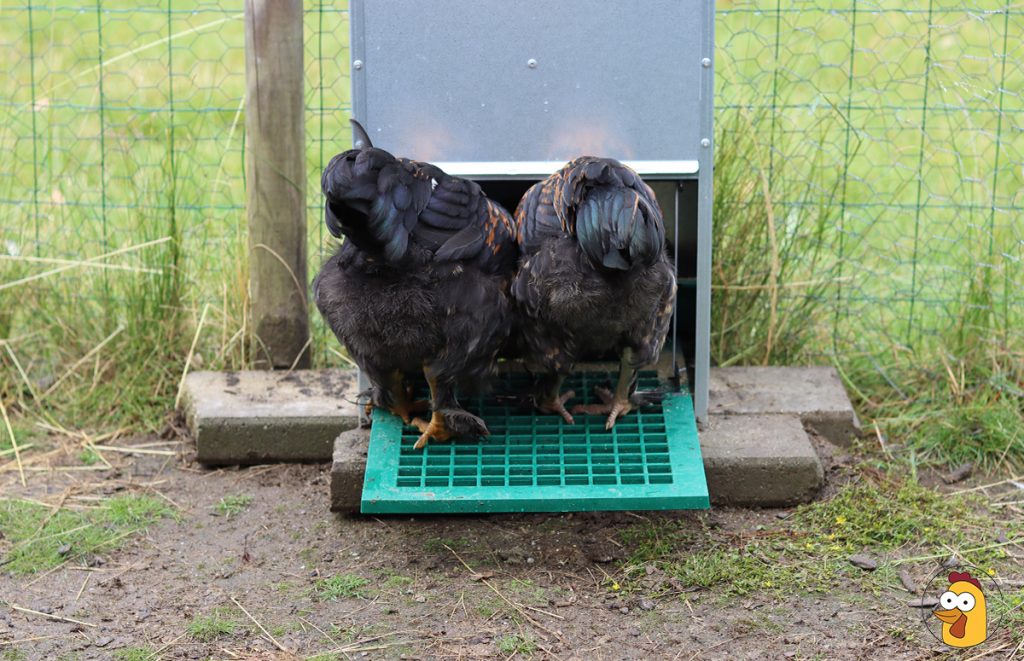
How Long Did it Take?
For us, it went very smoothly. After only ten to fifteen minutes, the youngest chickens (12-week-olds) used the feeder as if they had never known anything else.
The adult chickens took a bit longer but followed the younger chickens’ example within a few days.
Their first try looked like this:
5. Be Patient
This whole process can take time and requires patience. Some chickens will learn faster than others.
It’s important to be consistent and regularly give the chickens the chance to practice with the automatic feeder.
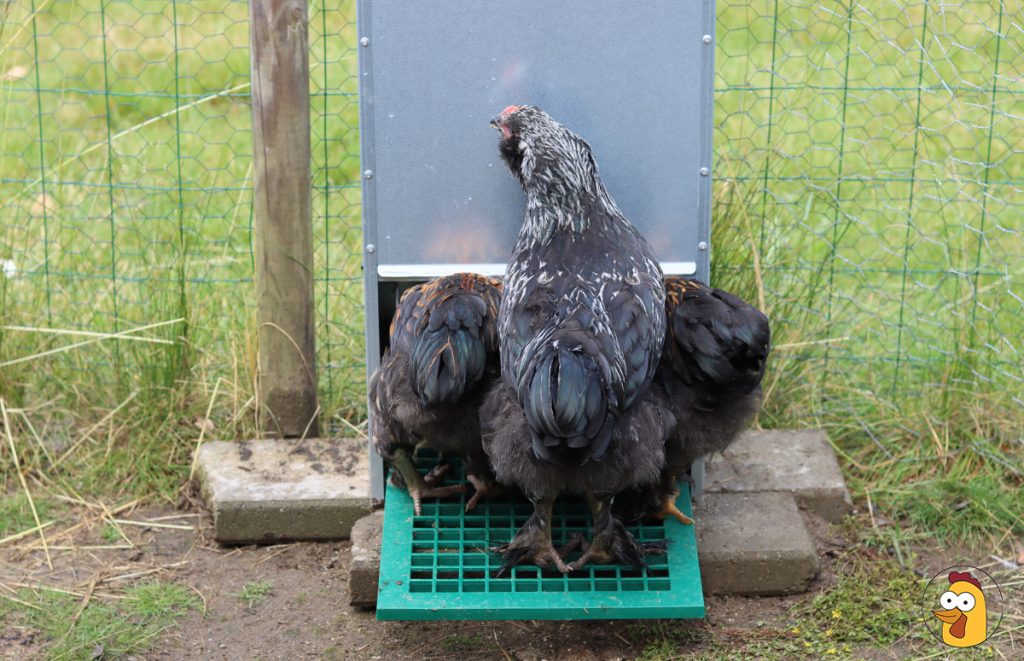
Here, it also seemed like the young chickens were much less afraid of the feeder than the adult chickens and therefore set an example.
As your flock becomes more familiar with the mechanism, they will develop the confidence and skill to open the feeder independently.
Benefits of an Automatic Feeder
Here are the main benefits of using an automatic feeder like the Feed-O-Matic compared to regular feeders:
- Pest-Resistant: The feeder only opens when there’s enough weight on the treadle, preventing mice and rats from accessing it.
- Moisture Protection: The enclosed design keeps the feed dry, preventing mold.
- Efficiency: The design reduces food waste as chickens can’t easily scratch the feed out.
- Ease of Use: Most automatic feeders have a bigger capacity. You can leave for a day or longer without worrying about your chickens.
- Suitable for Different Poultry: The feeder is suitable for chickens, ducks, quails, pheasants, turkeys, and geese.
- Freedom for Chickens: Chickens can decide when to eat.
Possible Drawbacks of an Automatic Feeder
While an automatic feeder offers many benefits, there are also some drawbacks to consider:
- Cost: These feeders are more expensive overall than traditional plastic feeders.
- Adjustment Time: Most chickens need time to learn how to use the treadle, which can be frustrating.
- Spilling: Depending on the type of feed, there can be some spilling initially, especially when using mash. Pellet feed is the best option for less spillage.
- Weight Limit: The feeder only opens with a certain minimum weight, which can be problematic for very light poultry like some bantam breeds.
AUTOMATIC TREADLE CHICKEN FEEDERS
Conclusion
Training your chickens to use an automatic feeder can be challenging, but it’s definitely possible with patience and the right approach.
By staying patient and following the steps outlined, your chickens will quickly and efficiently learn to use their new feeder, making your job as a chicken owner much easier.
